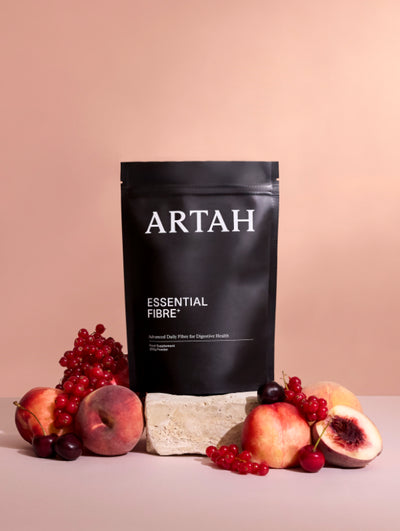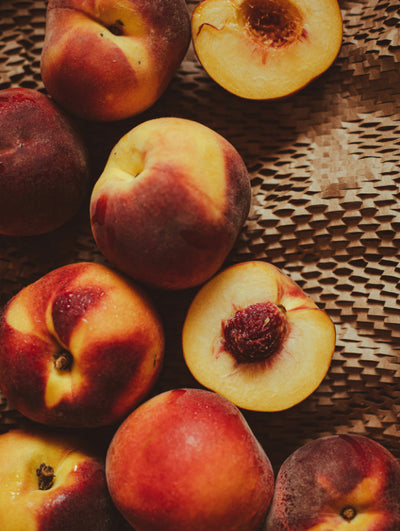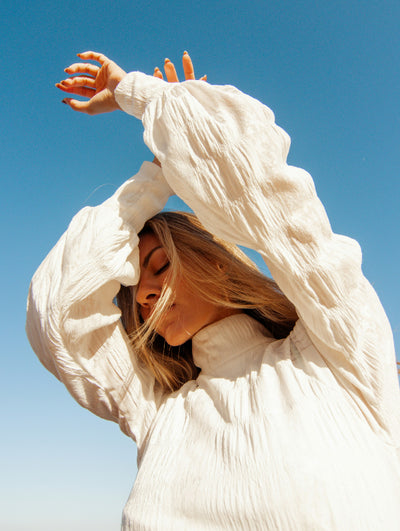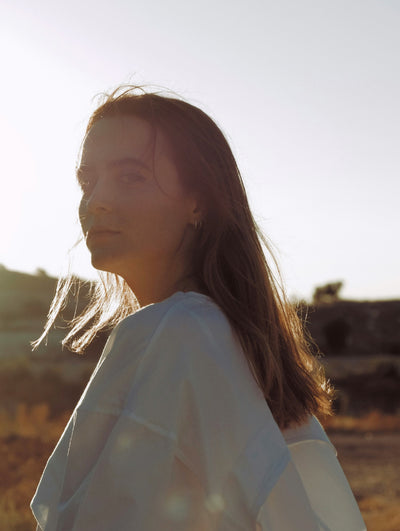(estimated read time: 3 minutes)
Here’s the truth; a good poop, or lack thereof, can influence our entire day. It can help us feel lighter, more comfortable, more energetic, improve our appetite, and get this – it even stimulates our vagus nerve, which is why afterwards, we can feel calm and happy. But a good poop isn’t a sure thing, and whilst about 16% of Britons are classified as ‘constipated’, a whopping 37% of people report a sense of ‘incomplete' bowel movements and 55% of people report difficulty or strain when going. (1) Incomplete bowel movements can lead to symptoms of bloating, irritability, fatigue, lack of appetite and just a general feeling of digestive discomfort. We know that gut health is paramount to every aspect of our well-being, and our daily bowel habits are a good insight into what’s going on. Here’s how to improve your poop this year.
Let’s start with the basics. What is normal?
If you’ve ever seen a Naturopath or Nutritionist, you’ve probably had to describe your bowel habits at length. This is because the state of our bowel movements gives us so much insight into the health of your internal environment. What does a healthy poo look and feel like? Here’s a quick summary.
Frequency: We should be having between 1-3 ‘normal’ movements per day. When we say normal, we mean without urgency, well formed, and comfortable.
Ease of passage: Stool should be relatively easy to pass, and without cramping, pain, or a need to strain. It should also be easy to wipe clean and take no more than one or two passes.
Size: About the length of the forearm from wrist to elbow. This doesn’t need to be all at once and can be throughout the day. Note, this will vary with food, and undereating can cause stool volume will decrease.
Consistency: Smooth, well formed, and in one piece (or large pieces). The Bristol Stool chart is a diagnostic tool used to describe the shape and consistency of stool, and helps diagnose constipation, diarrhea, and IBS. Using this chart, we want to see a 4 or 5.
Smell: Whilst it won’t ever smell pleasant, foul or offensive smelling stools are not the norm. This could be a sign of fat malabsorption, too much alcohol or sugar, food intolerance (like lactose intolerance), microbial imbalance or infection and more. An infection would usually be accompanied by other symptoms, like diarrhea and/or bloating.
Colour: Stool gets most of its brown colour mainly from bilirubin, a by-product of the breakdown of red blood cells. It’s completely normal, however, to see other colours, depending on the food you eat. Plant foods that are rich in pigments, like beetroot, carrots, spinach, can change the colour of your stool, but there are a few things to watch out for.
- Unless you’re taking activated charcoal, black stools could be a sign of bleeding in your upper digestive tract.
- Pale or chalky stools can indicate a gallbladder issue.
- Yellow, greasy stools can indicate malabsorption. For example, coeliacs can experience greasy, frothy, foul-smelling stools whilst undiagnosed.
- Bright red blood could be from hemorrhoids or fissures, however there are other more serious causes of this, as well.
- If you have any of the above, it’s important to consult your doctor.
Mucous: Our stomach and intestines are lined with a mucous membrane that serves as protection from invading microbes, stomach acid, partially digested food particles, microbial by-products and food-associated toxins. But, it shouldn’t be noticeable in your stool regularly. If you notice mucous when you go to the bathroom, it could be a sign of inflammation or infection. If the mucous is bloody, persistent, and/or accompanied by abdominal pain, it’s also important to consult your doctor.
Now that we know what’s normal – and not so normal – here's what you can do to have the best poops ever.
Get your fibre up: Soluble fibre increases stool volume, whilst insoluble fibre helps improve transit time, so both are important for healthy bowel movements. An easy way to make an impact is to add milled flaxseeds to your routine; the fibre in them is two thirds soluble and one third insoluble, making it a great targeted functional food to add into your regime. Start by adding 1 tbsp to your food, twice daily. It’s great as a salad topper, in smoothies, soups, or you can even drink it with water if you prefer.
Add prokinetic foods: Prokinetic means pro-movement and are foods or herbs that help increase intestinal motility. Our favourite is ginger, found in therapeutic doses in both GI Fix and Biome Restore. If you prefer food form, fresh ginger is also a winner. If using it fresh, try blending it to incorporate into smoothies or salad dressings to get the full benefits of the root, rather than just soaking it in tea. Other favourite prokinetic foods are unsweetened soft prunes, pumpkin seeds, artichoke, golden kiwi, natural sauerkraut and turmeric. See the recipe for our Prokinetic Salad below.
Go for a daily dose of high-quality olive oil: If you’re someone with slower movements that feel less than lubricated, a spoonful of high-quality, cold pressed olive oil each day can be a great support. If you want to combine a few functional foods, add milled flaxseed, olive oil, lemon juice (or grapefruit juice), a little apple cider vinegar and water together and drink.
Try Triphala: Triphala is an Ayurvedic herb that is also a well-known prokinetic for the gut. It encourages the growth of beneficial bacteria in the gut due to its high polyphenol content. (2) You can find Triphala in GI Fix.
Reduce intake of constipation triggers: You guessed it - alcohol, refined grains, excess dairy, fast food and processed foods that are high in sugar can all trigger a slower BM. You'll often see red meat as a potential trigger for constipation, however, this is nuanced. If your diet is high in red meat AND low in fibre, then this combination can seriously impact the gut. But there are clear health benefits of high-quality red meat when it comes to protein and nutrient density, so keep the greens and fibre high when you do consume it.
Focus on meal timing: Our gut has natural cleaning waves, called the Migrating Motor Complex, which help push the contents of our gut through the system, contribute to microbial health and promote regularity. It’s triggered in the fasted state, which means if we’re constantly eating, our motility can suffer. It needs about 3-4 hours to work its magic, so if you’re a constant grazer, you’ll likely feel a lot better if you start to eat properly spaced-out meals. Pro tip – the gut needs time to clean itself overnight as well, so try to finish eating 3 hours before bed.
Stress less: Stress impacts our gut in a variety of ways, but one of the most significant when it comes to bowel movements is that it causes alterations in intestinal motility, and the MMC as mentioned above. We can experience this as both quick transit time (more frequent in times of acute stress) or slow transit time (more common in times of chronic stress). Because of this, it’s important to focus on vagus nerve activation with techniques like breathwork and yin yoga. Marion Pearce, yoga teacher and founder of Allez, recommends seated and supine twist positions, which can help encourage natural peristalsis of the bowel, whilst reducing the fight or flight response and activating the vagus nerve.
Try Biome Restore: Biome Restore contains 50 billion CFU of live bacteria clinically proven to improve gut discomfort, regularity and gut barrier integrity. It also features ginger, our prokinetic of choice, and a hefty dose of nootropic Lion’s Mane to help nourish the gut-brain axis and reduce the effects of a stressful schedule. Awarded by Vogue and Get the Gloss.

Recipe: Prokinetic Salad
Serves 2
This salad is packed with soluble fibre, insoluble fibre, prokinetic foods, and high-quality extra virgin olive oil for the combination your gut will love. We’ve also added capers and red onion – high in gut loving quercetin, which also comes in handy for our immunity during the winter.
Ingredients:
- 1 large head broccoli, cut into florets. Save the stalk to cook and freeze for smoothies.
- 1 small blood or normal orange, peeled and flesh removed from segments
- ½ jar grilled artichokes in olive oil or a few per person, chopped roughly
- 2 tbsp capers
- 2 tbsp pumpkin seeds, chopped
- 1 stalk celery, sliced
- 1 tbsp milled flaxseed
For the dressing
- 4 tbsp runny tahini, if not using runny tahini, add some more water
- 1 inch ginger, peeled
- 2 tbsp apple cider vinegar
- 2 tbsp extra virgin olive oil
- ¼ cup water to start
- Squeeze of lemon
- 1 tsp maple syrup (optional, the salad already has sweetness from the orange)
- Sea salt + black pepper
Method:
1. Steam the broccoli until soft so it’s easy to digest; around 6-8 minutes.
2. Chop the rest of the ingredients and transfer everything into a mixing bowl.
3. To make the dressing, put everything into a Nutri bullet or blender and processes until smooth. The taste and texture of tahini varies greatly, so adjust flavorings and water to your liking.
4. Pour some dressing over your salad and toss to coat. Season with salt and pepper and enjoy! This is a great side to grilled chicken or fish.
References:
1. @article{Mukherjee2006ClinicalSO, title={Clinical Study of 'Triphala' - A Well Known Phytomedicine from India}, author={Pulok Kumar Mukherjee and Sujay R Rai and Sauvik Bhattacharyya and P. K. Debnath and T K Biswas and Utpal Jana and Srikanta Pandit and Bishnu Pada Saha and Pradipta Paul}, journal={Iranian Journal of Pharmacology and Therapeutics}, year={2006}, volume={5}, pages={51-54}, url={https://api.semanticscholar.org/CorpusID:20611480} }
2. Tamura A, Tomita T, Oshima T, Toyoshima F, Yamasaki T, Okugawa T, Kondo T, Kono T, Tozawa K, Ikehara H, Ohda Y, Fukui H, Watari J, Miwa H. Prevalence and Self-recognition of Chronic Constipation: Results of an Internet Survey. J Neurogastroenterol Motil. 2016 Oct 30;22(4):677-685. doi: 10.5056/jnm15187. PMID: 27426278; PMCID: PMC5056578.



















































